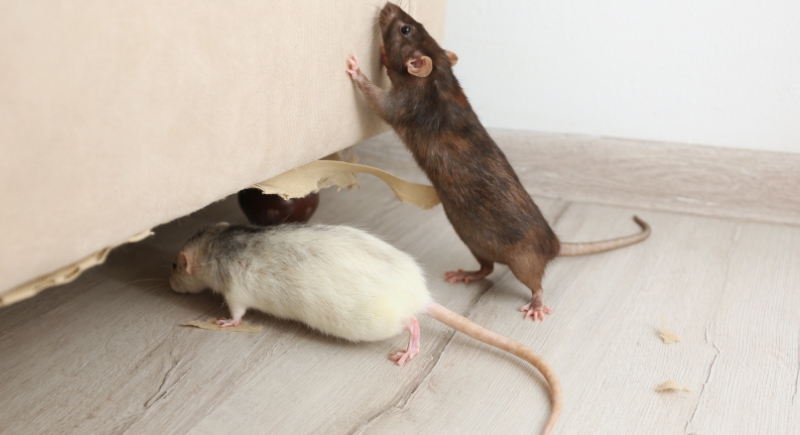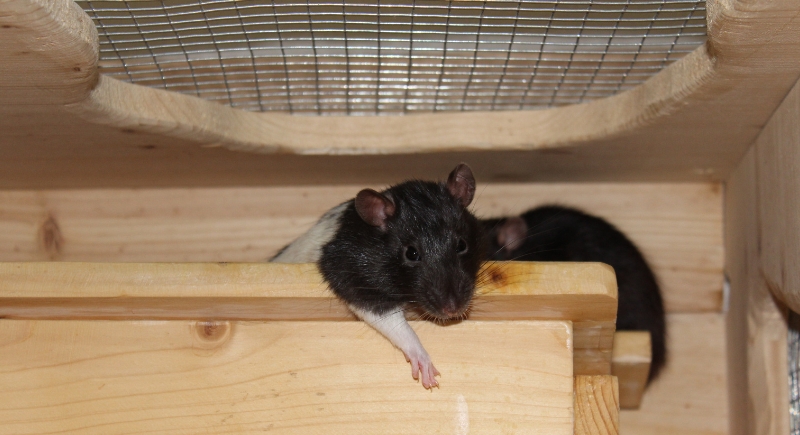A Pet Rat Chewed Through a $1,400 Couch and Now Its Owner Needs Advice
Rats are hardwired to chew, and they’ll sink their teeth into almost anything they find. That instinct usually leaves behind scraps of fabric or torn cardboard, but sometimes it comes at a higher cost.
One pet rat named Izzy proved the point when she chewed straight through her owner’s $1,400 sectional. The damage was shared on Reddit, where it became an example of just how much destruction a small animal can cause inside a home.
Why Rats Chew Furniture

Image via Canva/Africa Images
Most rat guardians know before adoption that chewing comes with the territory, but others only realize the extent of it once their pets shred the first hammock or cushion. Rats chew because their teeth never stop growing, and gnawing keeps those teeth at a workable length. If they did not chew, their incisors would grow long enough to make eating or grooming difficult.
For a rat, a couch cushion is just as suitable as a branch in the wild. It gives resistance and can be torn into pieces for nesting. Gnawing also helps them explore and acts as a way to test their surroundings.
In a home, that instinct translates into destruction when they encounter fabric, wood, or plastic. Guardians may interpret this as destruction, but to a rat, it is normal upkeep and exploration. This is why scolding does nothing to stop the behavior, particularly after you realize that biology drives it more than boredom or mischief.
Damage Goes Beyond Chewed Couches
A shredded sectional makes for a funny story, but rat nibbling can be far more dangerous in other settings. Electrical wires are especially concerning. When insulation gets stripped away, exposed wires can spark and cause house fires. Rats also bite into water lines, which creates leaks that require expensive repairs.
In attics, they pull insulation apart to use as nest material, which reduces heating and cooling efficiency. Even structural wood or softer metals are not safe. These habits come from the same biological need that drives Izzy to tear into fabric.
For pet owners, the risk usually stays confined to items within reach, but the principle remains: chewing is constant. Keeping rats in controlled spaces and limiting their access to important systems prevents the most serious problems. Without boundaries, the ruin spreads quickly, and what begins as a nuisance can escalate into a health or safety hazard.
Safe Outlets for Chewing

Image via Pixabay/TippyToe the Tinker Rat
Providing rats with acceptable outlets is the most practical way to protect furniture. Willow sticks, bamboo chews, and untreated cardboard boxes are all inexpensive and harmless. Various owners rotate these items to keep them fresh, since novelty encourages more use.
Inside the cage, switching hideouts or adding puzzles with hidden food offers mental stimulation that reduces destructive chewing. Some rat keepers remove cloth entirely when hammocks or beds keep turning into shredded scraps. After a break, they may reintroduce one item to see if the habit has eased.
Outside the cage, rat-proofed rooms give animals space to roam without endangering valuable items. Covering cords, blocking access under couches, and sealing small gaps are key steps.
Remember, the goal is not to eliminate nibbling but to direct it toward things designed to handle it. Rats remain happier and healthier when they can gnaw, and caretakers keep their belongings intact in the process.